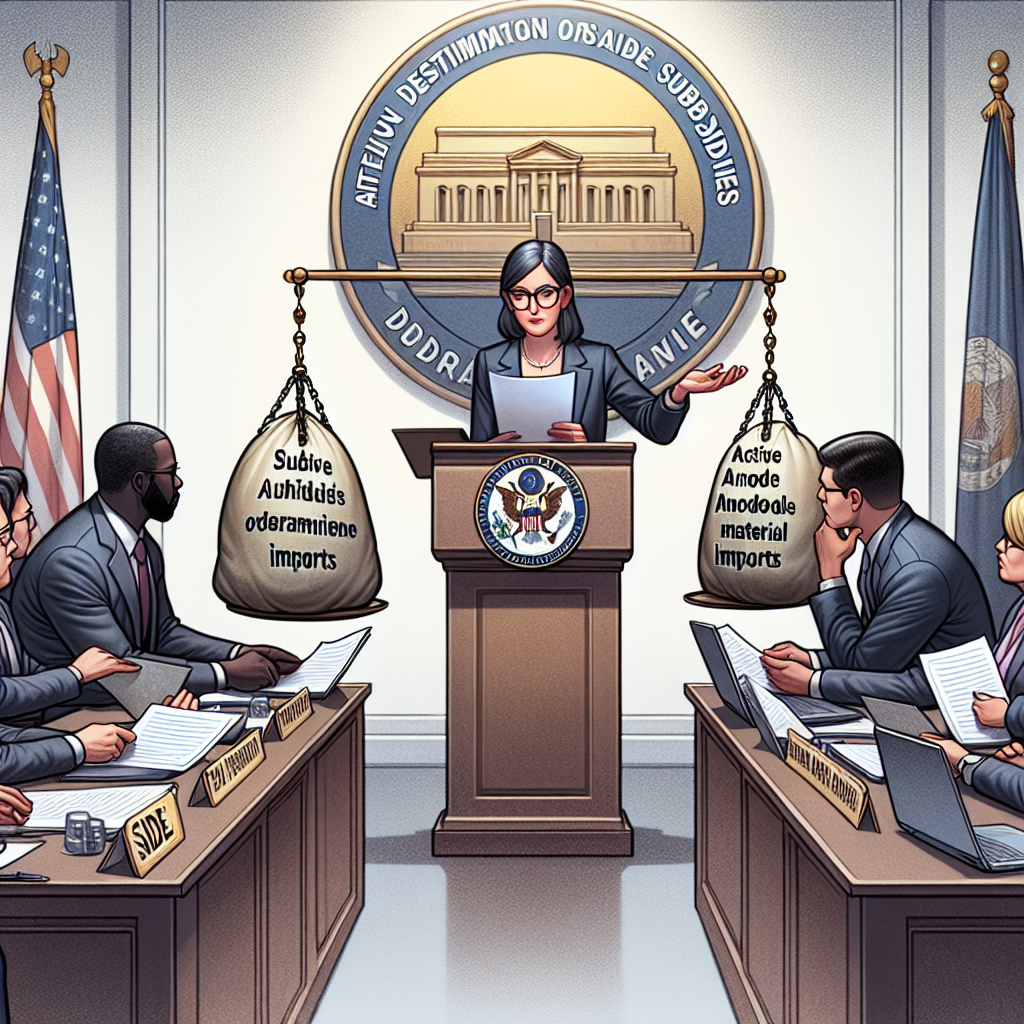The U.S. Department of Commerce announced on Tuesday (May 20) that it has made a preliminary affirmative determination in a countervailing duty investigation on the import of Active Anode Material from China, recognizing that Chinese exporters have received unfair government subsidies, with the highest subsidy rate reaching 721.03%.
Active Anode Material is a critical component of electric vehicle batteries, mainly composed of graphite and silicon materials, widely used in the new energy industry. This ruling marks an important development in the U.S.’s trade investigations into Chinese battery material subsidies and is being conducted concurrently with an antidumping investigation targeting the same product.
The preliminary determination revealed that two Chinese companies received subsidy rates exceeding 700%. Shanghai Shaosheng Knitted Sweat was found to have a subsidy rate of 721.03%, and Huzhou Kaijin New Energy Technology Corp., Ltd. had a rate of 712.03%. Both were calculated under the “adverse facts available” (AFA) policy due to insufficient cooperation in the investigation. Additionally, Panasonic Trading Company and other exporters were subject to a 6.55% subsidy rate.
According to the regulations, if the U.S. Department of Commerce issues a preliminary affirmative countervailing duty ruling, importers will be required to pay a “cash deposit” equivalent to the subsidy rate on the relevant Chinese products from the date of announcement.
The final imposition of formal tariffs will depend on the anticipated final rulings from the U.S. Department of Commerce and the International Trade Commission (ITC), expected to be issued in the latter half of this year. As per the established procedures, the final tariff order is projected to be officially released on November 20.
The U.S. authorities pointed out that Chinese exports of natural and artificial graphite anode materials to the U.S. receive significant government subsidies, leading to price distortions and severely damaging the fair competition environment for domestic industries in the U.S.
This case stems from a petition filed by U.S. graphite industry players in December last year, accusing Chinese companies of exporting graphite products at prices below cost driven by state subsidies and overcapacity, disrupting the market significantly. The petitioners demanded tariffs of up to 920% on Chinese graphite products, warning that the industry is facing threats from China’s “malicious trade practices.”
Back in the first term of President Trump in 2018, the U.S. government had imposed a 25% tariff on Chinese synthetic graphite as part of the U.S.-China trade war. However, the industry believes that the current tariffs are insufficient to curb China’s dumping practices, urging the government to significantly bolster trade defense measures.
China is a primary global producer of graphite, supplying over 90% of the world’s anode materials. According to data from consultancy firm Capstone LLC, the U.S. has a high dependence on Chinese graphite imports, with around 59% of natural graphite and 68% of synthetic graphite coming from China. This high level of dependency has raised concerns among policymakers, making supply chain security a critical issue.
In addition to the countervailing duty case, the U.S. is also conducting an antidumping investigation into Chinese anode materials. If both cases are established, Chinese products exported to the U.S. will face dual tariff pressures.

